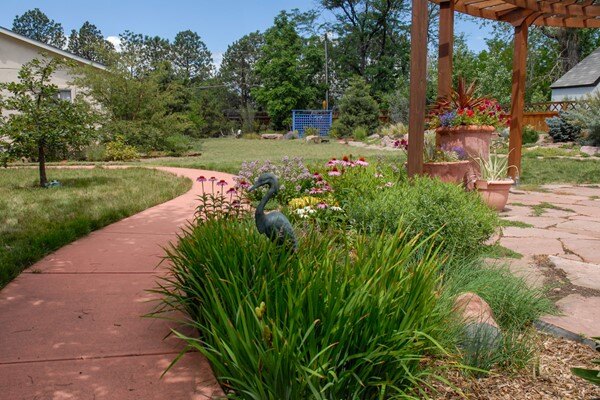Siberian Iris
Siberian iris is an upright perennial flower with narrow dark green-like leaves. Attractive, 3-inch wide flowers appear on sturdy, branches stems in early summer.
Flower color depends on the cultivar, usually being, blue, purple, white and yellow. Siberian iris grows best in moist soil. They will survive in drier areas, but will be smaller in size and flower less.
The leaves of Siberian iris are much narrower than bearded iris.
.jpg)
.jpg)
.jpg)
.jpg)
Siberian Iris
Siberian iris is an upright perennial flower with narrow dark green-like leaves. Attractive, 3-inch wide flowers appear on sturdy, branches stems in early summer.
Flower color depends on the cultivar, usually being, blue, purple, white and yellow. Siberian iris grows best in moist soil. They will survive in drier areas, but will be smaller in size and flower less.
The leaves of Siberian iris are much narrower than bearded iris.
Plant details
Botanic Name
Iris sibirica
Pronunciation
EYE-ris sy-BEER-ah-kuh
Mature Height
1 to 2 ft.
Mature Spread
1 to 2 ft.
Water usage
One Droplet: Water twice per month or less, once established.
Two Droplets: Water about once per week, once established.
Three Droplets: Water about twice per week, once established.
Flower Color
blue-purple
Bloom time
early summer
Colorado Native
No
Natural Habitat
Russia, central Europe
Light Requirements
sun
Cold Hardiness
USDA zones 3-8
Elevation Limit
hardy to 9,000 ft.
Performance
Different siberian iris cultivars have been planted at the Water Wise Demonstration Garden. They are smaller than most bearded iris, and have attractive "beardless" flowers. The leaves are darker green and narrower than bearded iris.
If we don't divide them regularly, bloom quality falls declines. Nonetheless, if given regular moisture, the pretty flowers, dark green leaf color, upright habit, and narrow width of the leaves makes them an attractive choice.
Maintenance
Siberian iris needs to be divided periodically when the center dies out, ideally every three to four years in August. Cut back the old leaves in fall or early spring. Cut back the flower stalk after flowering.
See in a landscape
With a yard this big, designing for low maintenance and water conservation can be a real challenge. But this homeowner and garden enthusiast was up for the challenge. A large patio was installed to both accommodate outdoor entertaining needs and stay in scale with the large size of the backyard. The beds surrounding the patio are planted with flowering perennials adapted to our climate, watered with drip irrigation and mulched to retain moisture. Because the grass in this yard has only occasional foot traffic from visiting grand kids, part of the Kentucky bluegrass (darker green) was kept and the rest was converted to blue grama (lighter green). However, after experiencing the benefits of blue grama for a few years, the homeowners have decided to convert the entire grass area to the native blue grama. To access the gate to the alley, they mow a path in the tall blue grama.

.jpeg)
.jpeg)
.jpeg)
.jpeg)
.jpeg)
.jpeg)
.jpeg)
.jpeg)
.jpeg)
.jpeg)